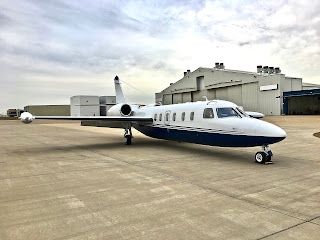This next season of blogs will be based on my experiences while flying air ambulance missions in the central portion of the United States in a Pilatus PC-12. This is a departure from the entirety of time I have spent operating various aircraft and one that is sure to be memorable.
 |
| Challenger 350 |
The career change follows the sale of the Bombardier Challenger 350 I had been flying for an OKC based company and the subsequent closing of the flight department. It was a move that surprised the entire group and I certainly believed I would be with the company much longer than the short seventeen months.
To others in the industry the transition to flying a smaller and slower aircraft wouldn’t make sense. The traditional career progression for a pilot usually involves moving “up” from one aircraft to another larger model or a role that is one step closer to flying for a major airline. This change is much more for me, however. I’m after the best quality of life for my young and growing family and the plans we have for our future. I don’t mind at all flying something smaller and MUCH slower than the last airplane. This new mission of flight also has me excited about what lies ahead. Fulfillment in the work I get to do each day will come in a new way as compared to previously.
The new role has me flying the PC-12 as a one person flight crew. This is referred to in the industry as single-pilot flying. It has been something I have aspired to do in turbine airplanes for some time and presents a different set of challenges and rewards.
Once out and flying I will bring more on the famed “Swiss Suburban” and the LifeSave stories that come along with the role.

























